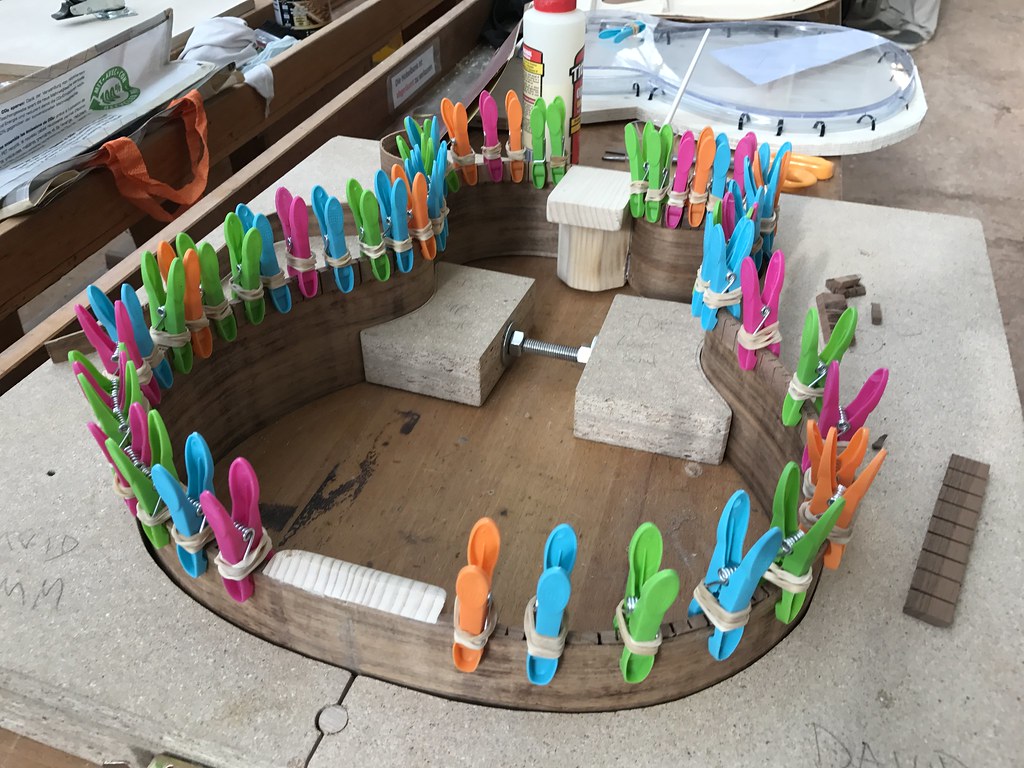Quote:
Originally Posted by charles Tauber

Top bracing is looking much more appropriately sized.
|
Excellent. thats good to know.
Quote:
Originally Posted by charles Tauber

I'd consider making neck and end blocks smaller: they don't need to be that heavy. I usually make end blocks from a laminate of spruce top off-cuts that end up being about 1/2" thick. I find that works well for both steel string and classical guitars.
|
Actually I've left that end block slightly on the large size because my walnut/maple neck isn't the lightest so i'm hoping that small amount of extra weight in the spruce block at the back end might help balance it out slightly.
Quote:
Originally Posted by charles Tauber

I like the idea of using plastic tubing as the clamping interface. I've used upholstery foam to accomplish the same thing.
|
I had another look at the video where I saw Michael Greenfields jig, he uses much bigger tubing then I did. I found the larger diameter tubing to be very stiff, i'm still slightly concerned my current tubing is on the stiff side, even though it does just about squish when I put a lot of weight on it.
Quote:
Originally Posted by charles Tauber

As far as contouring the sides after bending, it is pretty easy. If you already have some plan you are following, you can easily trace it or draw in onto common poster board to make a functional, flexible template. Using a sharp knife, cutout the template. Then wrap the paper template against the bent side and use a pencil to mark the outline on the side. Then using a chisel, plane or coping saw, remove the excess to the line.
If you are using radiused dishes, just lay the bent sides in the outside mold on the dish and use a pencil in a divider of compass to mark the contour of the dish onto the sides. Remove excess, as above.
Alternatively, if you don't have a template, and don't use a dish - I don't - suspend the braced back above the bend sides in the outside mold. With the back bent to the appropriate shape - braces side-to-side and an appropriate curvature end to end induced - use a pencil in a divider or compass to mark the contour of the back onto the sides. Ditto for top. If that isn't clear, I probably have pictures that I can post of the process. Remove excess, as above.
|
This is pretty much what I did. Traced my template onto the side and then followed the line with a coping saw. I found it very difficult to cut when the side wasnt under tension or either held / clamped against something. In the end borrowing 3 extra hands to hold it while it was being cut seemed to do the trick. That option is probably not always going to be available, I think its 100% easier to cut it before bending
I did manage to get the top lining glued on though
 Untitled
Untitled by
David Emm, on Flickr